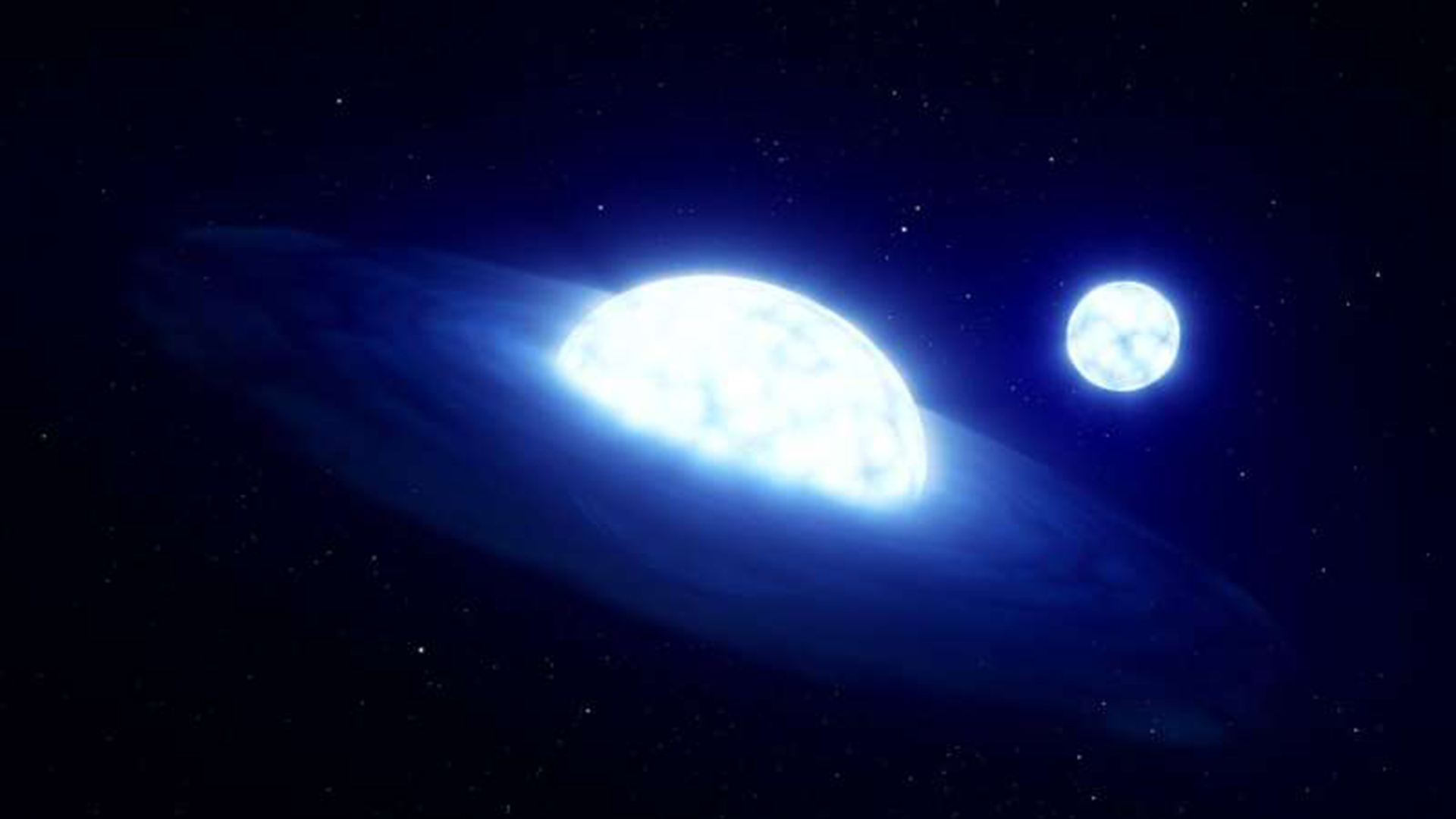
The universe may be haunted by more triple-star "vampire" systems than previously thought, new research in the journal Monthly Notices of the Royal Astronomical Society suggests.
The new research looks at the evolution of a mysterious kind of star called type-Be stars. These stars, a subset of the bright and ordinary type-B stars, spin very fast and sport rings of orbiting matter, neither of which have been conclusively explained. By analyzing high-precision data from the Gaia and Hipparcos satellites, researchers at the University of Leeds in the UK have now shown that the strange features of Be's could be explained by the influence of two additional, companion stars orbiting the main star in many Be systems.
"They are the next hot topic," lead study author Jonathan Dodd, a PhD student at the University of Leeds, told Live Science of the three-star systems he and his colleagues pinned down in their latest research. According to the team's findings, these systems of more than two stars may be more common in the universe than we thought.
Where there's a wobble
The researchers set out to study how Be stars get their superfast spin and signature rings. The prevailing theory is that these stars develop from binary systems of two stars orbiting a common center of mass. Here, the Be's prey upon their smaller companion star, drawing in matter that collects in a ring around the larger star while simultaneously accruing additional angular momentum that makes the Be spin faster.
This explanation is so entrenched that it has earned Be stars the epithet "Vampire stars". However, the evidence for this process has been far from conclusive. So the study authors analyzed data on the positions and movements of stars across the sky to identify binaries and compare their prevalence in standard B stars versus the faster-spinning Be's.
To do this, the team used a method similar to that used by German astronomer Friedrich Wilhelm Bessel in 1844 in the first observation of a binary star. Noting a wobble in the path that Sirius, the brightest star visible from Earth, took across the night sky, Bessel concluded that gravitational interactions with a companion star must be the cause. The wobble stems from a difference in the center of mass of the binary system and the center of the combined light emitted by the stars.
Mind the gap
To their surprise, the researchers found that there were actually fewer binary systems for Be stars than B stars — roughly 28% of observed Be's were binary versus about 42% of the observed B's. One explanation might be that in Be systems the vampire star had stripped away its partner's matter to such an extent that it could no longer be detected from a wobble in the star's path. However, the plot thickened when the team noted that the prevalence of binaries was diminished only for a specific range of separation distances between the component stars, and separations over that range would be too great for the Be to pull material from its companion.
The researchers resolved the conundrum by looking at data for the star systems where the companion star had been stripped of its material. They noted that a Be star with a companion star orbiting at a distance within the range where binaries were less common was far more likely to be part of a system of more than two stars.
Although any system of more than two objects is fundamentally chaotic, they tend to form more stable arrangements when two objects close together are circled by any additional objects at a much greater distance. These more distant stars also tend to drive the inner two stars closer together.
As such, the binaries with a separation within the range underrepresented for Be's would be more likely to include an additional party, and this third star would drive the inner two stars closer together before often being flung away by the chaos of the orbit. With the inner stars pushed closer, the Be would then prey on its companion, accruing its spin and ring. The data thus supports the notion that these stars are vampires after all.
As Dodd put it, "[The triples] are a more important factor than we previously thought."







